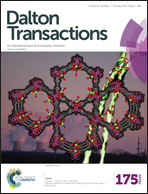Cationic rhenium complexes ligated with N-heterocyclic carbenes – an overview
Abstract
This review provides an overview of the currently known cationic rhenium NHC complexes. Synthesis, structures and properties are described. The title compounds are potential candidates for both catalytic and medical applications. Besides the variety of ancillary ligands, which are in some cases easily substituted, functionalization can be carried out in the side chain or at the backbone of the carbene ligand as well as – in the case of biscarbene ligands – at the bridging moiety. Cationic Re NHC complexes are promising precursors for radiopharmaceuticals and diagnostics – not only because of the possibility to radiolabel the metal (steps in this direction have been made and described already) – but rather the opportunity to link the complexes to biomolecules via the different possibilities provided by the ligands. The development of OLEDs based on luminescent Re(I) carbene complexes renders another potential application.


 Please wait while we load your content...
Please wait while we load your content...